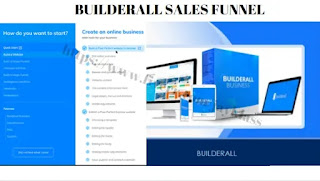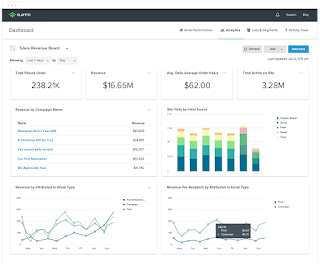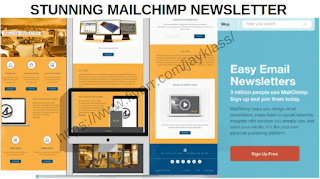Why Every Shopify Store Needs a Marketing & Sales Funnel to covert sales and also active customer.
The key to any successful business is a healthy sales funnel. This is especially true for ecommerce stores whose survival relies on transforming their site visitors from casual browsers into committed customers.
If you’re unfamiliar with online marketing and sales funnels, this article will give you a quick overview for how to use them with Shopify stores. Plus, I’ll explain why offering them as an additional service to your clients can dramatically increase their happiness and revenue.
My business, fiverr.com/jayklasshttps://www.fiverr.com/jayklass/set-up-a-highly-convertible-klaviyo-sales-funnel-email-flows-for-your-store, specializes in building funnels for established online business owners, and as a Shopify Partner, we focus on working specifically with Shopify stores. There are essentially two different kinds of funnels we sell: a marketing funnel designed to capture email leads, and a sales funnel designed to capture payment for products or services.
Below I’ll share examples that illustrate how you can integrate both funnels within a Shopify store so that your client is able to cross-sell a similar product to their existing customers.
You might also like: Why Can't We Be Friends: Finding the Balance Between Marketing and Design
Marketing funnels for Shopify stores
First up is the marketing funnel designed to turn traffic into subscribers and customers through marketing automation. Even if your client’s store is converting at a solid 2% of traffic, don’t forget that this means that 98/100 people leave empty handed and are likely to never come back. You can improve on this by capturing someone’s email address and following up with them.
I recently built a marketing funnel for Andrew Youderian’s business, Right Channel Radios. As you may know, Andrew is the host of the Ecommerce Fuel podcast, and is one of only a handful of shows that I tune into every single week.
We used the free Sumome scroll box app (which slides up from the bottom right corner) to create the offer or ‘lead magnet,’ which offered users a free email course on how to choose the right CB equipment, plus a PDF version of an FAQ guide the business already had. If this sounds like a lot of work, don’t fret. You don’t need to spend hours in Adobe InDesign to create a professional PDF — the free Chrome extension Print Friendly can create something presentable with only a few clicks.

We then connected the popup to Klaviyo, the marketing automation software that Andrew was using, and created a new flow with a drip campaign of four emails:

The first three emails delivered the content of the course, which linked to specific category and product pages. The final email was a wrap up to the campaign and included an offer code.
Over the last two months since setup, the drip campaign has brought in over $2,000 in revenue. The first email brought in 45% of those sales, the second accounted for 30%, the third garnered 15%, and the fourth led to the final 10% of revenue. These results show that the first email in any drip campaign is always the most important in terms of engagement, but also highlights the importance of having a drip sequence which follows up.
We charge a one-time fee of $999 to set up the Popup Marketing Funnel, which means that most ecommerce stores are able breakeven within two to three months. From there, it’s all gravy. The website starts converting traffic into customers near automatically month-to-month.
By split testing headlines and email copy, ecommerce owners can see a 30% uplift in revenue, often making email marketing as valuable of a channel as search. It’s a great additional service to upsell your clients on when building out a new store.
Sales funnels for Shopify stores
Right now, the typical way ecommerce owners try to increase average order value is by installing upsell apps such as Product Upsell, which offer a “you may also like” box with upsells and cross-sells. These are great and work well when people have actually added an item to their cart (right at the end of the sales funnel), but this approach misses 98% of people who do not end up at checkout.
Instead, you can set up front-end sales funnels with an offer that can convert cold traffic into new customers. The best way of doing this is by offering a product for free if the customer just pays shipping.
Russell Brunson, the founder of Clickfunnels, is the king of “free+shipping” offers. He sold 26,000 copies of his book Dotcomsecrets (a must read for online entrepreneurs in my opinion) by offering his book for free as long as the customer was willing to pay for shipping. Once a customer has entered their contact and payment details, the next pages in the sequence are one-time-offers for $197 and $297 where people can purchase with just one click.
I’ve built a “free+shipping” offer for my own Shopify store that sells prints of photos people have taken on their iPhones, ipanoramaprints.com. Here’s how I did it.
First, I created this offer on Facebook:
When people claim the offer above, they are presented with a popup that includes a link to the offer funnel I’ve built on the subdomain offer.ipanoramaprints.com using Clickfunnels and Cloudflare.
The first page in the sales funnel, also known as the “squeeze page,” is where I collect their email addresses even if they do not end up any further in the funnel to purchase.

Nothing special so far. However, when people click the “Add to Cart” button, they go through to the first one time offer page, which upsells a framed version of the print at 30% off:

This is where the Shopify integration comes in. If they choose “No Thanks I Just Want The Free 18" Print,” the link pre-populates the offer product in the Shopify checkout by using permalinks to preload the cart. To do this, you need to grab the product variant ID (found by adding .xml to the end of the product page URL inside Shopify, which in this case is 7013815521) and then add it to the URL link with this structure: http://ipanoramaprints.com/cart/7013915521:1.
If the person hits the link to upgrade to the framed print for $69, they are instead sent through to one more one-time offer page, shown below:
The next page is the main sales/offer page where the visitor gets to add the offer to their cart.
Just as before, if someone hits the “no” link, they get sent to the checkout with the previous upsell. But if they hit “yes” to upgrade to a larger framed print, they end up with $149 in their checkout — not bad starting from a $9 product!
Let’s assume that for every 100 people that hit the squeeze page, 50% are completing their order. Out of these 50 customers, 60% are taking the original offer, 30% are taking the second offer and ~10% go for the third. This would mean that 100 people gross ~$1,000 in revenue and if my margins were 40% I’d earn $400 net. The value of each visitor would be $4 and I could safely advertise anywhere where a CPC is < $4 and still make money.
Here is the link to the entire panorama offer share funnel in ClickFunnels if you wish to replicate for your clients.
Summary
- Every Shopify site can benefit from a marketing funnel and an opt-in form, whether that’s on a popup, slide-up, or separate “squeeze” page and an email autoresponder sequence.
- Marketing funnels are an easy sell to clients with existing traffic when they can recoup the initial investment within just a few months.
- Ecommerce stores should be leveraging the power of sales funnels to turn cold traffic into new customers through innovative free+shipping offers that lead into a value ladder of higher-priced products.
- By increasing the average order value per visitor, sales funnels mean that store owners can spend more on PPC advertising for their profitable funnels. From there, PPC management can become another service you can cross-sell as a Shopify Partner.











Very informative and impressive post you have written, this is quite interesting and i have went through it completely, an upgraded information is shared, keep sharing such valuable information. Hubspot Consultant
ReplyDelete